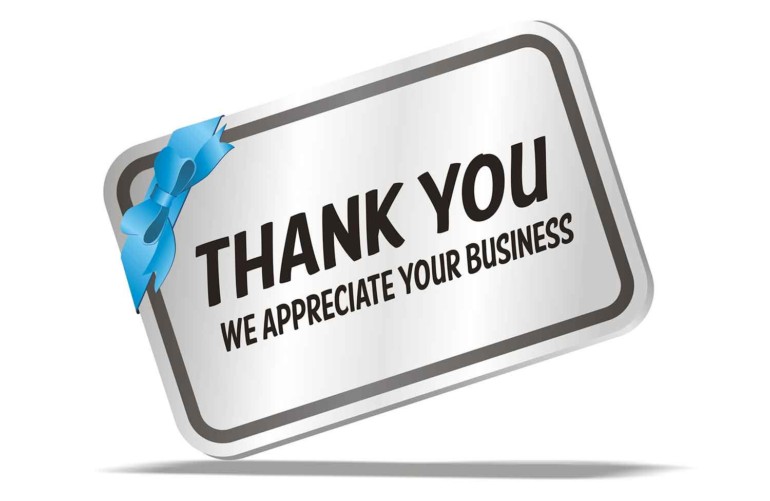Ask Andi: Our question this week is from two different owners about making marketing presentations. One focused on new business opportunities. The other is on following up with existing clients.
Making marketing presentations to get your point across is essential. Especially when you have a good story to tell. You want to help clients understand and appreciate the value your company provides, which can lead to repeat business, referrals, and increased support for the margins you charge.
Making marketing presentations
First owner’s question: Help me out on presentations! I’m starting my spring marketing campaign, which will include several presentations to groups – trade organizations and the like – where potential buyers will get to hear what I have to say. I haven’t done a lot of presenting in the past, and I don’t want to waste this opportunity. Can you give me some tips, to help me make a great impact?
Second owner’s question: My role is shifting, from getting new clients to managing existing ones – which includes making presentations on what we have done, where we are going, and how the client has benefited from working with my company. Often I am required to convey information to a room of 10 – 20 people, and I think my company could be a lot more effective at getting our point across. We provide a great service, and the client gets good payback for the dollars they spend, but I feel like we lose the audience’s interest when we’re presenting.
Speaking in front of prospective accounts can open the door to one-on-one meetings, and new business opportunities. Unfortunately, many presentations miss the mark, leaving the audience asleep, unengaged, or wondering what the point of the presentation really was all about. You want to be sure you demonstrate your expertise and professionalism, which will, in turn, help you solidify existing relationships and get new business.
Design to make an impression
Getting your point across is essential, especially when you have a good story to tell. You want to help clients understand and appreciate the value your company provides, which can lead to repeat business, referrals, and increased support for the margins you charge. Speaking in front of prospective accounts can open the door to one-on-one meetings, and new business opportunities. Unfortunately, many presentations miss the mark, leaving the audience asleep, unengaged, or wondering what the point of the presentation really was all about. You want to be sure you demonstrate your expertise and professionalism, which will, in turn, help you solidify existing relationships and get new business.
If you want to have a great presentation, take into consideration several factors. What kind of presentation are you making? Who is your audience, and what do they already know/need to know?
What kind of visuals will do the best job of reinforcing what you have to say? Level of detail Does your audience require what level of detail? Will you give the audience handouts to reinforce what you’ve talked about? What is the right amount of time to present? How do you handle questions without losing control? Without getting tripped up with something you can’t answer?
There are different kinds of presentations. Information to persuasion, education to entertainment, goodwill building to persuading. The best presentations are ones that challenge me to think more or think differently. Great presentations challenge me to take action. And give me some take-away that I can use right away.
Think of your presentation as a story
When preparing your presentation, think about what you want to accomplish – get a picture in your head of how you want your audience to behave when you’re finished. Think about what you can do to jog the status quo – perhaps a few shocking statistics, in the beginning, will get their attention. A couple of specific examples of what they can do next will get them focused and ready to take action at the end. End your presentation with an offer to re-connect, to get more information, or otherwise expand the relationship.
Knowing if your audience is older or younger can make a big difference in how you present. The younger the group is, the more you want a presentation that is fast-paced and hits the highlights. For an older audience, increase the size of the visuals in order to accommodate the less-perfect vision that goes with maturity. Usually, as the age of the audience goes up, you also want to increase your level of formality and slow down your pace.
If your audience is used to working in an office, they are likely to be comfortable sitting for a longer period of time. On the other hand, if they are usually out in the field, you probably need to present in shorter segments. Providing an opportunity to get up and move around can break up a long presentation and keep people from drifting off.
When thinking about the length of the presentation, consider that in general, you can keep an audience interested and entertained for an hour. That’s it. After that, you will start to lose their interest and may jeopardize your opportunity to pursue a connection after the seminar is over. If you have an hour-long presentation slot, put in lots of time for questions and answers.
Understand your market
There are some real tricks to handling questions. First, never assume you have to answer every question exactly as posed. You can re-direct questions, to focus on what you want to talk about. Second, buy yourself time to think by restating the question, or asking the person speaking to tell you a little more about themselves. Third, use questions to keep yourself in touch with the group, see where they are getting, or missing your point, and find out what else they are interested in hearing about.
Finally, if you get someone in the audience who is trying to take over, assert yourself. Suggest that they wait until the end of the presentation to talk with you one on one. Remember, the audience is there because they are interested in what you have to say. Own the space.
In terms of content, don’t become too informal. You can risk losing your audience by talking above their heads. A more experienced audience may want more details and be more likely to ask questions. Novices on the subject are likely to be quieter, as they work harder to absorb new information. And they may get lost if you get too technical. Do your best in any presentation to keep things appropriate to the group. Relatively simple, and easy to understand.
Pictures speak a thousand words. 80% of what people learn is through sight. Pie charts, bar graphs, diagrams, and mathematical equations speak volumes. Use them. Powerpoint is a program you can use to prepare a visually engaging presentation. If you can afford it, ask a graphic designer to help prepare your presentation.
Focus on specifics
Here are some basic design rules for marketing presentations. A maximum of six lines of text per page; 8 words per line. Write in bullets, not full sentences. Periodically present a page with an appropriate visual and no text, as an indicator of a transition. Or opening for discussion. Keep visuals simple. Use them to reinforce what you are saying. Use no more than 3 font sizes throughout the presentation. Make sure the look is consistent from beginning to end.
How much technical information do you have to get across? The biggest mistake I see most presenters make is trying to get across too much information. Leave your audience with questions. You want them to come back to you for more information. Simplify what you are trying to say. This will motivate people to contact you afterward for more details.
Offer a copy of the marketing presentation slides. If you plan to give handouts, you do so after the seminar, not during. Offer to mail people a handout of the slides, which you can add to your mailing list, and keep track of who requested information.
Print Powerpoint handouts that display from 2 to 6 slides/page. Produce a professional-looking handout. Email the presentation to a copy shop to make color prints if you don’t have a color printer. Once you mail the handout, you have a reason to follow up.
At end of the presentation, close strongly, with a call to action. Wrap up your conclusions in a few brief statements. Challenge your audience to take a concrete next step as a result of what you have told them. Give them 3 specific actions they can take, and don’t forget to offer to send them a handout if they will give you a business card.
Looking for a good book?
Try Knockout Presentations: How to Deliver Your Message with Power, Punch and Pizzazz, by Diane Direstra.





